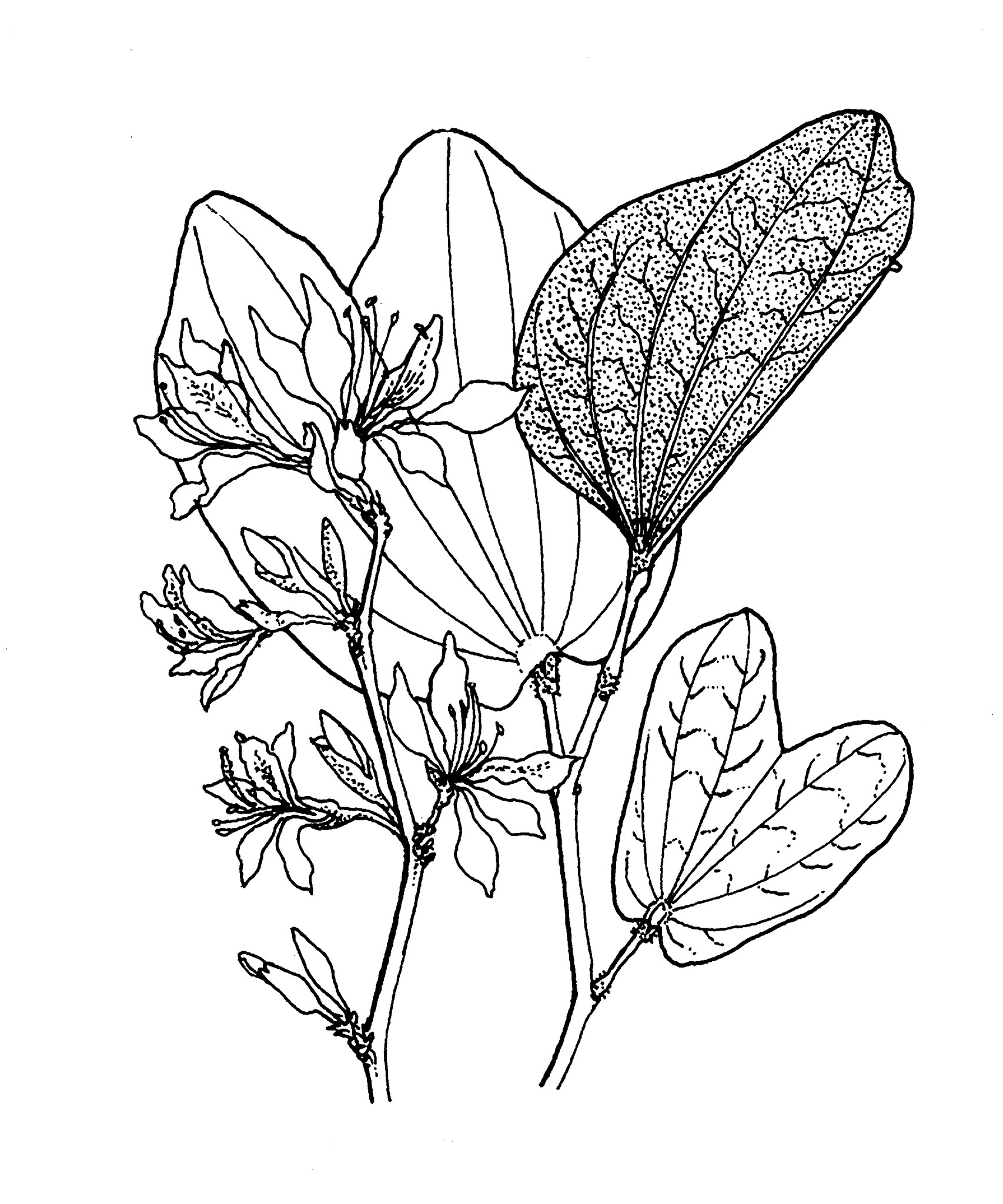
Commemorating John and Caspar Bauhin, 16th century herbalists; the bilobed leaflets characteristic of this genus symbolise the two brothers.
Trees, shrubs or climbers (sometimes with tendrils). Leaves characterised by the 2 leaflets joined together at the base, thus appearing 2-lobed, sometimes almost separate; stipules usually shed. Leaf stalk elongated into a bristle-like extension between the leaflets. Flower clusters in terminal or axillary racemes. Flowers white, pink to red, purple or yellow, resembling the flowers of large geraniums or orchids. Petals 5, unequal, mostly with a long, narrowed base. Fertile stamens 10, 5, 3 or 1. Ovary stalked. Fruit pods flat.
Grown for the unusual bilobed leaves and spectacular flowers.
About 300 species (some botanists view the number as closer to 100) throughout the tropics.
Seed or layers, sometimes cuttings.
The leaves and pods of B. variegata are edible and the bark has been used both medicinally and for tanning. Other species have been used to produce a range of strings, dyes, gums and timber. A sacred tree for Buddhists.
Leaves bilobed; flowers orchid-like.
De Wit (1956), Isely (1975).
Source: (2002). Caesalpiniaceae. In: . Horticultural Flora of South-eastern Australia. Volume 3. Flowering plants. Dicotyledons. Part 2. The identification of garden and cultivated plants. University of New South Wales Press.
